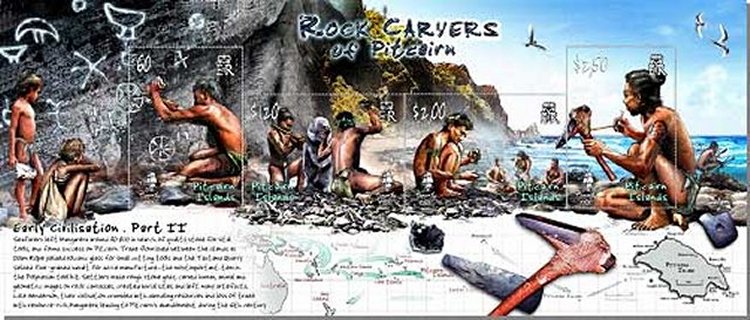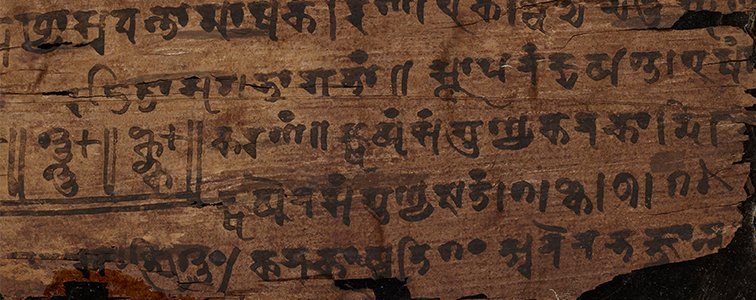Binary Code Was Used In Ancient India And Polynesia Long Before Leibnitz Invented It
A. Sutherland - AncientPages.com - In 1703, the German mathematician Gottfried Leibniz demonstrated the advantages of the binary system for computations and by doing so he laid the foundation for computing machines.
However, Leibniz was by no means the first person to discover the binary code. His invention was merely a re-invention based on ancient knowledge.
There is evidence that people in ancient India and Polynesia were familiar with the binary code thousands of years ago.
Having those discoveries in mind, scientists now question the origin of the binary system and the date of its invention.
Ancient Knowledge Of Binary Code in Polynesia
After studying the language of the tiny Pacific island of Mangareva in French Polynesia, Norwegian researchers discovered that one of two number systems traditionally used on Mangareva, had three binary steps superposed onto a decimal structure.
“Polynesian seafarers left Mangareva around AD 800 in search of quality stone for vital tools, and found success on Pitcairn. Trade flourished between the islands and settlers made rough stone gods, carved human, animal and geometric images on rock canvasses, created burial sites and left many artifacts. The Bounty mutineers arrived in 1790 and found their temple platforms, petroglyphs and stone tools giving evidence (and confirmed by Marshall Weisler), that Pitcairn had formerly supported an ancient Polynesian population, most probably from Mangareva.” Image credit: Pitcairn Islands Philatelic Bureau
The Mangarevan invention of binary steps, centuries before their formal description by Leibniz, attests to the advancements possible in numeracy even in the absence of notation and thereby highlights the role of culture for the evolution of and diversity in numerical cognition.
See also:
Was Ancient Egyptian Science Inherited From A Lost Atlantean Civilization?
Scientists discovered that the Polynesians who arrived in Mangareva over 1,000 years ago used a decimal system, as other Polynesians did. However, by A.D. 1450, the Mangarevans were using a system that combined base 10 and base 2. In the Mangarevan language, there are words for the numbers 1 through 9, as with all decimal systems.
For numbers 20 to 80 ancient Polynesians used a binary system, with separate one-word terms for 20, 40 and 80.
Ancient Music Text Reveals Knowledge Of India
There is a very interesting ancient music text written by Pingala, and important ancient scholar and author of Chhandahshastra (meaning science of meters). This ancient musical composition reveals knowledge of the binary system. The text dates to 2nd century A.D. and is with other words more than 1500 years older than Leibnitz binary system.
According to researchers, the Chhandahshastra represents the first known description of a binary numeral system in connection with the systematic enumeration of meters with fixed patterns of short and long syllables.
Use of zero is sometimes ascribed to Pingala due to his discussion of binary numbers, usually represented using 0 and 1 in modern discussion, but Pingala used light (laghu) and heavy (guru) rather than 0 and 1 to describe syllables.
As Pingala's system ranks binary patterns starting at one (four short syllables—binary "0000"—is the first pattern), the nth pattern corresponds to the binary representation of n-1 (with increasing positional values).
Bakhshali manuscript – Image credit: Bodleian Library
Pingala is credited with using binary numbers in the form of short and long syllables (the latter equal in length to two short syllables), a notation similar to Morse code.
That the binary code was invented in India is hardly a surprise. Not long ago, scientists discovered a very intriguing ancient Indian text known as the Bakhshali manuscript that re-writes the history of number zero and mathematics.
Written by – A. Sutherland - AncientPages.com Senior Staff Writer
Copyright © AncientPages.com All rights reserved. This material may not be published, broadcast, rewritten or redistributed in whole or part without the express written permission of AncientPages.com
More From Ancient Pages
-
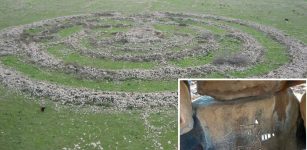 Unknown Lost Civilization Of Ancient Megalithic Super-Builders In The Middle East – Can Prehistoric Rock Art Solve The Mystery?
Featured Stories | Jul 13, 2020
Unknown Lost Civilization Of Ancient Megalithic Super-Builders In The Middle East – Can Prehistoric Rock Art Solve The Mystery?
Featured Stories | Jul 13, 2020 -
 Ancient Volcanic Eruption Was Not A Catalyst To Early Homo Sapiens Cultural Innovations – Study finds
Archaeology | Jul 8, 2024
Ancient Volcanic Eruption Was Not A Catalyst To Early Homo Sapiens Cultural Innovations – Study finds
Archaeology | Jul 8, 2024 -
 Historian Suggests Jack The Ripper Fled To Australia Where He Met His End
Archaeology | Sep 10, 2016
Historian Suggests Jack The Ripper Fled To Australia Where He Met His End
Archaeology | Sep 10, 2016 -
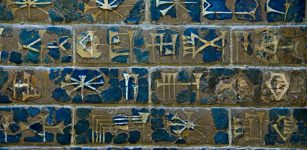 Ishtar Gate, The Eighth Gate Of The Inner City Of Babylon
Civilizations | Sep 6, 2015
Ishtar Gate, The Eighth Gate Of The Inner City Of Babylon
Civilizations | Sep 6, 2015 -
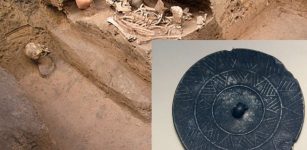 Qijia Culture – Its Disappearance Remains An Ancient Mystery
Civilizations | Feb 5, 2021
Qijia Culture – Its Disappearance Remains An Ancient Mystery
Civilizations | Feb 5, 2021 -
 On This Day In History: First Battle Of Reading Took Place – On Jan 4, 871 AD
News | Jan 4, 2017
On This Day In History: First Battle Of Reading Took Place – On Jan 4, 871 AD
News | Jan 4, 2017 -
 Guide To The Classics: On The Art Of Physical Exercise, A 16th Century Account Of Ancient Sports And Workouts
Featured Stories | Jul 26, 2024
Guide To The Classics: On The Art Of Physical Exercise, A 16th Century Account Of Ancient Sports And Workouts
Featured Stories | Jul 26, 2024 -
 Biblical Prophet Jeremiah Whose Prophecies Disappointed People
Biblical Mysteries | Jan 30, 2019
Biblical Prophet Jeremiah Whose Prophecies Disappointed People
Biblical Mysteries | Jan 30, 2019 -
 Sacred Helgafell Mountain And The Story Of Torolv Mostrarskjegg
Myths & Legends | Mar 13, 2024
Sacred Helgafell Mountain And The Story Of Torolv Mostrarskjegg
Myths & Legends | Mar 13, 2024 -
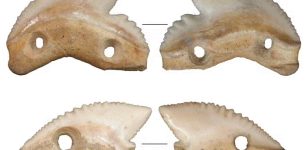 7,000-Year-Old Shark-Tooth Knives Discovered In Indonesia
Archaeology | Oct 27, 2023
7,000-Year-Old Shark-Tooth Knives Discovered In Indonesia
Archaeology | Oct 27, 2023 -
 Mystery Of The Medieval ‘Out Of Time’ Village In England
Featured Stories | Mar 21, 2024
Mystery Of The Medieval ‘Out Of Time’ Village In England
Featured Stories | Mar 21, 2024 -
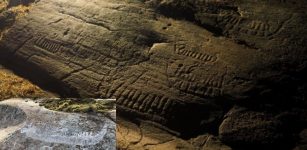 Ancient Petroglyph Code Cracked By Archaeological Explorers
News | Apr 10, 2020
Ancient Petroglyph Code Cracked By Archaeological Explorers
News | Apr 10, 2020 -
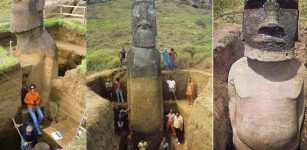 Easter Island’s Statues Reveal Bodies Covered With Unknown Ancient Petroglyphs
Archaeology | Jan 21, 2014
Easter Island’s Statues Reveal Bodies Covered With Unknown Ancient Petroglyphs
Archaeology | Jan 21, 2014 -
 Ancient Roman Government Structure And The Twelve Tables
Ancient History Facts | Jan 18, 2016
Ancient Roman Government Structure And The Twelve Tables
Ancient History Facts | Jan 18, 2016 -
 Denisovans Were First To Adapt To High Altitude And Harsh Conditions Of Tibetan Plateau
Archaeology | May 2, 2019
Denisovans Were First To Adapt To High Altitude And Harsh Conditions Of Tibetan Plateau
Archaeology | May 2, 2019 -
 Ancient Burials Shed New Light On Earliest Humans In Indonesia
Archaeology | Aug 25, 2022
Ancient Burials Shed New Light On Earliest Humans In Indonesia
Archaeology | Aug 25, 2022 -
 DNA Analysis Shows Griffin Warrior Ruled His Greek Homeland
Archaeology | Aug 26, 2022
DNA Analysis Shows Griffin Warrior Ruled His Greek Homeland
Archaeology | Aug 26, 2022 -
 Lake Huron Was Home To A 9,000-Year-Old Civilization – Underwater Structures And Artifacts Reveal
Archaeology | Jun 17, 2021
Lake Huron Was Home To A 9,000-Year-Old Civilization – Underwater Structures And Artifacts Reveal
Archaeology | Jun 17, 2021 -
 Has The Mystery Of The Lost Trading Ship Zuytdorp Been Solved?
Archaeology | Dec 11, 2024
Has The Mystery Of The Lost Trading Ship Zuytdorp Been Solved?
Archaeology | Dec 11, 2024 -
 Huge Ancient Hydraulic System Built By The Liangzhu Culture May Be World’s Oldest And Predate Mesopotamian Water Systems
Ancient Technology | Dec 9, 2017
Huge Ancient Hydraulic System Built By The Liangzhu Culture May Be World’s Oldest And Predate Mesopotamian Water Systems
Ancient Technology | Dec 9, 2017


